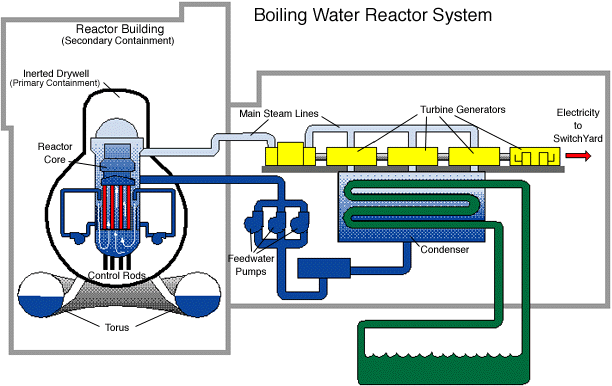 |
|
| -Main Page -Fission -Fuel Source -Cool Pics -PWR -BWR |
In the afigure, water is circulated through the Reactor Core picking up heat as the water moves past the fuel assemblies. The water eventually is heated enough to convert to steam. Steam separators in the upper part of the reactor remove water from the steam. The steam then passes through the Main Steam Lines to the Turbine-Generators. The steam typically goes first to a smaller High Pressure (HP) Turbine, then passes to Moisture Separators (not shown), then to the 2 or 3 larger Low Pressure (LP) Turbines. In the sketch above there are 3 low pressure turbines, as is common for 1000 MWe plant. The turbines are connected to each other and to the Generator by a long shaft (not one piece). The Generator produces the electricity, typically at about 20,000 volts AC. This electrical power is then distributed to a Generator Transformer, which steps up the voltage to either 230,000 or 345,000 volts. Then the power is distributed to a switchyard or substation where the power is then sent offsite. The steam, after passing through the turbines, then condenses in the Condenser, which is at a vacuum and is cooled by ocean, sea, lake, or river water. The condensed steam then is pumped to Low Pressure Feedwater Heaters (shown but not identified). The water then passes to the Feedwater Pumps which in turn, pump the water to the reactor and start the cycle all over again. 
This information and picture were taken from Nuclear Tourist. |